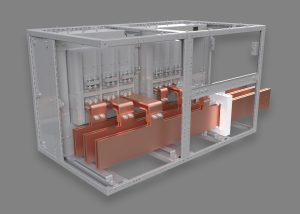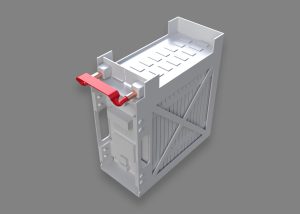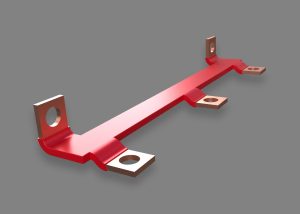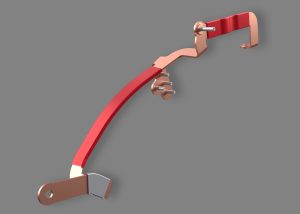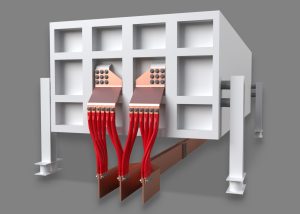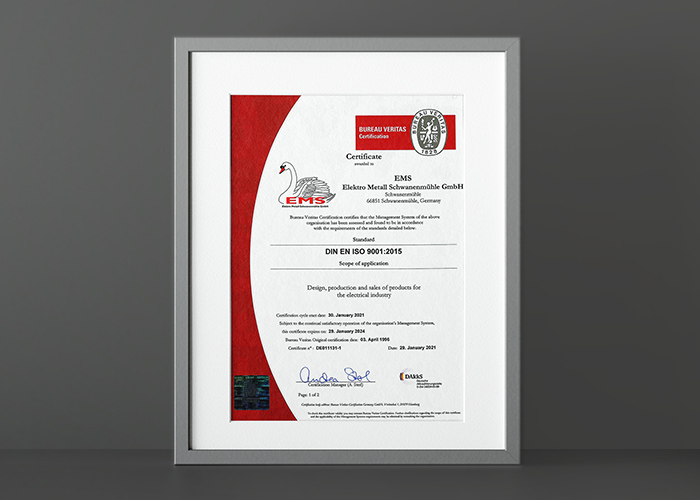Economical & ecological energy
The primary industry produces raw materials such as hydrogen, chemicals, and cement. It faces major challenges that must be overcome. In addition to economic and technological aspects, sustainability and thus the distribution of electrical energy are becoming increasingly important. This is where busbar systems come into play, ensuring a more sustainable power supply and offering many advantages – both economically and ecologically.
To reduce the ecological footprint
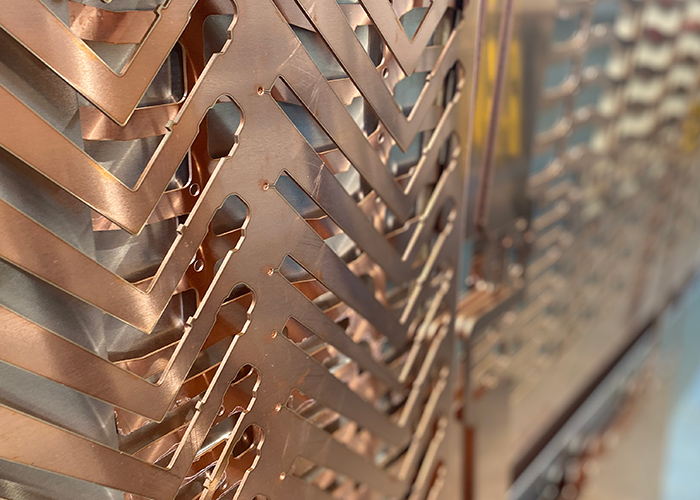
Recycling management for copper
Due to copper’s indispensable role as an energy conductor, for example in power lines, global demand for copper will continue to rise. However, increasing copper production is leading to higher energy consumption and greater environmental pollution as copper content in ores declines.
However, since copper busbars are highly recyclable, we already practice a circular economy for copper. Part of the demand is met by the production of secondary raw materials. This reduces the need for new resources, minimizes environmental impact, and represents an important step toward sustainability.
Environmentally friendly production processes
Preserving our natural environment and the livelihoods of our employees and future generations is very important to us. That is why we are committed to protecting the environment, reducing environmental pollution, and minimizing harmful environmental impacts. We have equipped a total of 860 m² of roof space with photovoltaic modules. This primarily covers the energy requirements of our machines, electric cars, and other in-house consumers. The surplus electricity is fed into the public grid. With these measures, we strive to ensure the protection of the environment and our employees while continuously increasing energy and material efficiency.

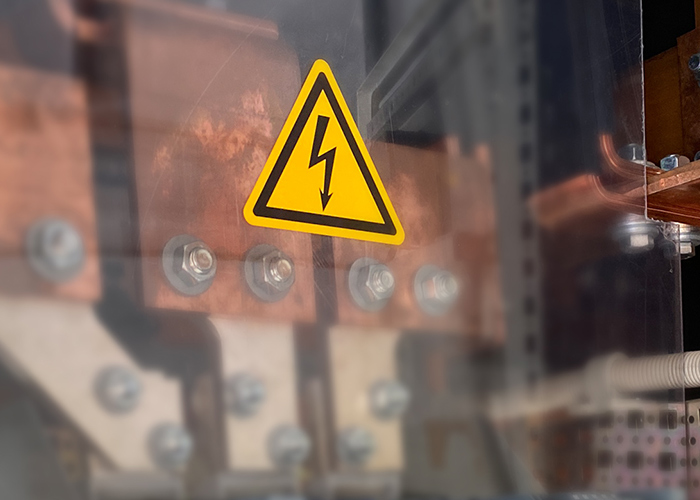
More sustainable than cables
Busbars have a significantly longer service life than cables under comparable operating conditions. This is due to their more robust design, better protection against environmental influences, more effective heat dissipation, and fewer vulnerable connection points. Under optimal conditions, cables can have a long service life, but they are more susceptible to wear and environmental influences, which tends to shorten their useful life. Busbars, especially in fixed installations, can achieve a significantly longer service life than cables, making them a worthwhile investment. A service life of 50 years or more is often mentioned. High-quality systems also last significantly longer under optimal conditions. There is evidence that well-maintained busbars can still function reliably even after more than 200,000 operating hours – equivalent to over 20 years of continuous operation.
Design for the future
Busbars and systems can be designed in a modular fashion so that they consist of individual, independent modules or components. The system is thus divided into individual line segments for energy transmission, which offer connection options for other components, sensors, or measuring devices for recording current, voltage, or temperature. In the event of a fault, the source of the fault can be easily located and the defective module replaced. Individual modules can be added, maintained, removed, or replaced without having to rebuild the entire infrastructure. Such a replacement is usually faster and easier than replacing an entire system, which reduces downtime. In addition, modular systems can be more easily adapted to changing requirements. This leads to cost savings, conservation of resources, and reduction of waste.

Fun facts about the Palatinate Forest

EMS is headquartered at Schwanenmühle in the heart of the Palatinate Forest. This is the largest contiguous forest area in Germany. It is not only a beautiful destination for excursions, but also an example of how people and nature can live in harmony. The forest is not only seen as a source of raw materials, but also as a habitat and climate protector. It not only secures the wood yield for future generations, but also preserves the ecological diversity and important functions of the forest as a water reservoir.
The Palatinate Forest is also known for its extensive, near-natural meadows, which form an important habitat for bees and other pollinating insects. These, in turn, are crucial for the preservation of biodiversity. Preserving biodiversity and ensuring the pollination of wild and cultivated plants are essential aspects of sustainability in agriculture and nature conservation.
If you visit us at Schwanenmühle, be sure to allow a little extra time to discover this magnificent area. Our region is beautiful.
Do you have any questions?
Sustainability is crucial for the future of our raw materials. With our efficient busbars and systems, you too can prepare for the future and reduce your ecological footprint.

Discover possible applications
We have years of experience in engineering customized solutions for your requirements. In addition, we have the necessary “workbench” for manufacturing the associated components on site.

